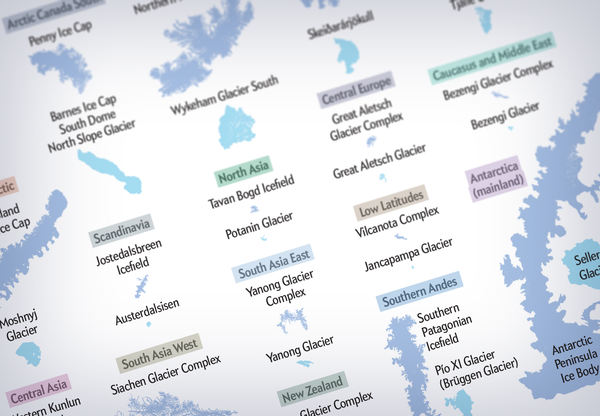On supporting science journalism
If you're enjoying this article, consider supporting our award-winning journalism by subscribing. By purchasing a subscription you are helping to ensure the future of impactful stories about the discoveries and ideas shaping our world today.
Scientists recently created the first systematic ranking of Earth’s largest glaciers. They started by comparing inconsistent databases to select the forms that best fit the definition of a glacier—a long-lasting, flowing mass of ice. Determining the borders of individual glaciers, however, is challenging. Ice caps, for example, move in multiple directions, so more than one glacier may be part of a single source. “Flow divides can be difficult to calculate,” says co-author Bruce Raup of the U.S. National Snow and Ice Data Center (NSIDC).
At lower elevations, glaciers can converge, making it unclear whether they count as one or more bodies. Despite the challenges, the results tabulate more than 200,000 glaciers and glacier complexes (glaciers that share a common border). Seller Glacier and the Antarctic Peninsula Ice Body top the list, respectively. “The more accurately we can map glacier outlines, the better we can track their melting due to climate change,” says lead author Ann Windnagel of the NSIDC.

Credit: Amanda Montañez; Source: “Which Glaciers Are the Largest in the World?” by Ann Windnagel et al., in Journal of Glaciology; 2022 (glacier shapes and map reference)
